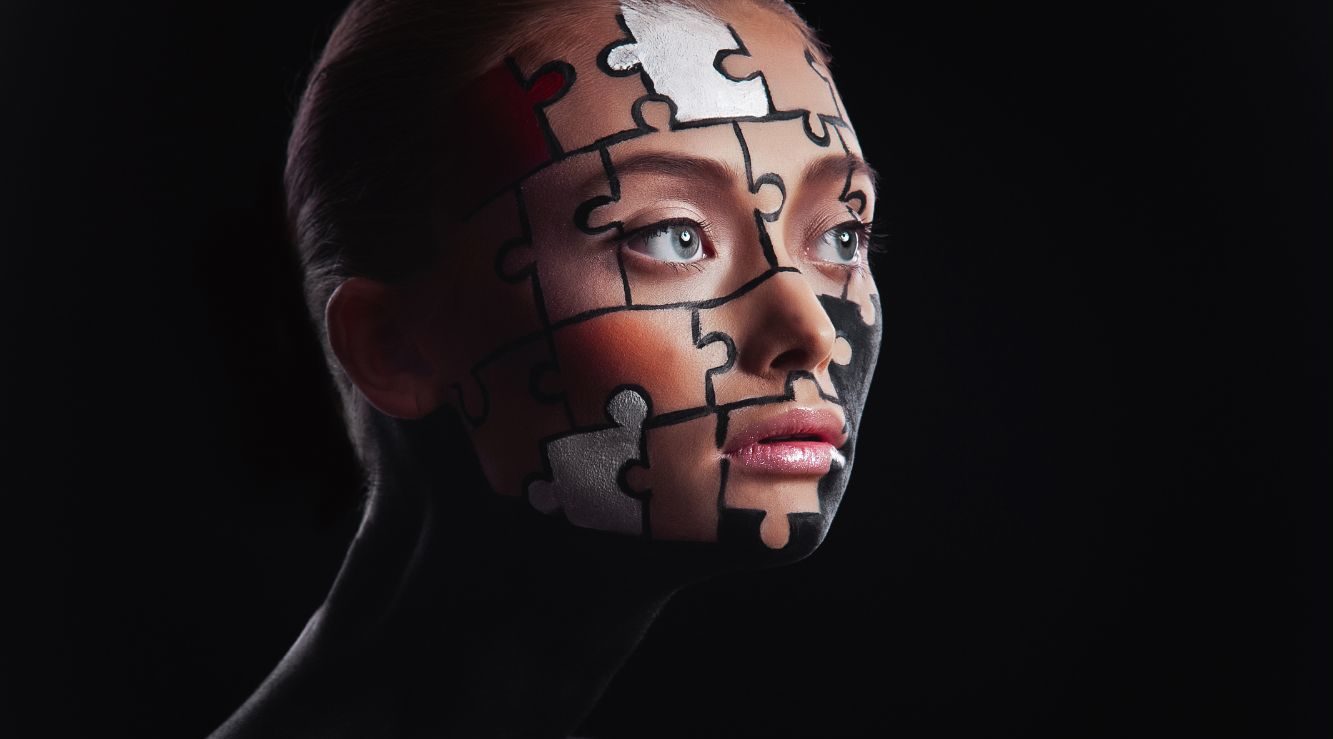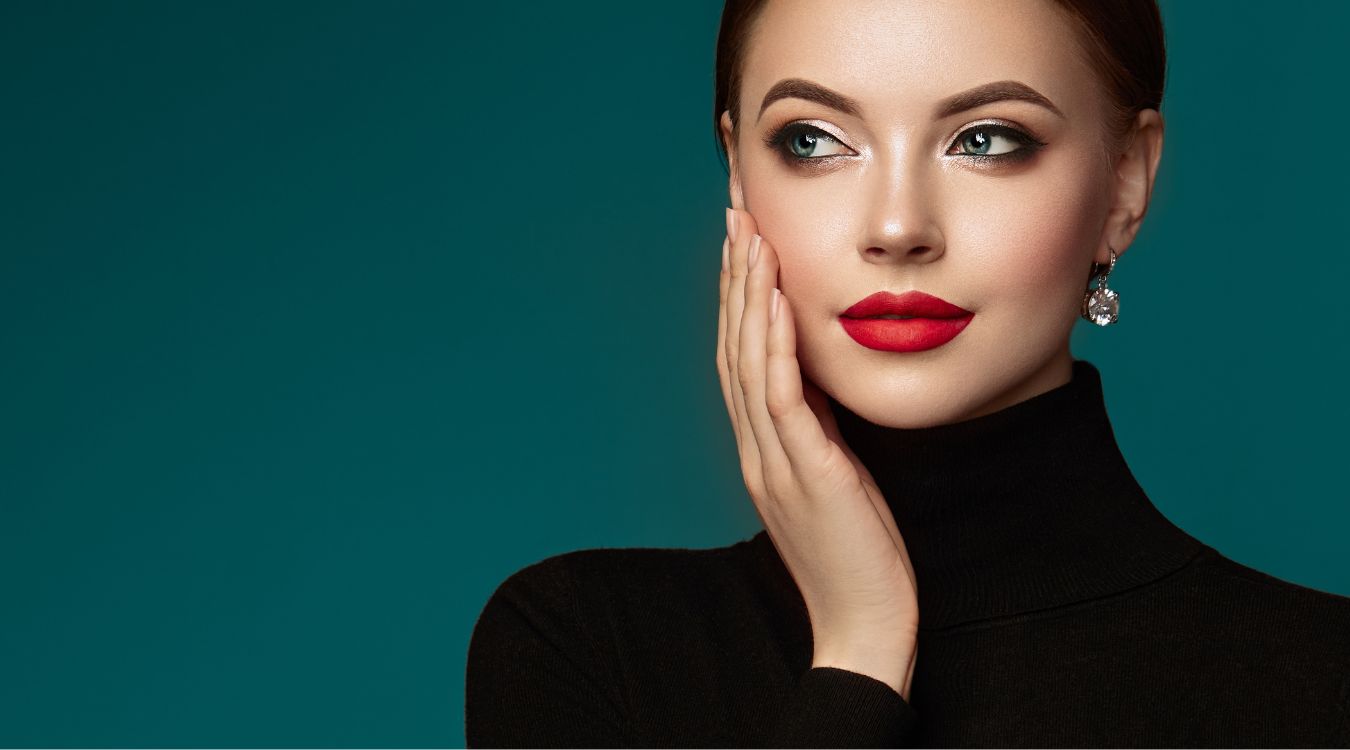What Is Facial Symmetry And How Do You Determine Yours?
It has been said that beauty is in the eye of the beholder and since as far back as the 14th-century facial symmetry has been associated with beauty. Individuals who have more symmetrical faces are considered more attractive than those with faces that are asymmetrical.
Today we are going to explore facial symmetry and how you can check to see how symmetrical your face is.
What Is a Symmetrical Face?
If an individual has the exact same features and qualities on both sides of their face, their face is considered symmetrical. Having one eye that is a bit larger or the eyes at different heights are factors that make someone’s face asymmetrical. A perfectly symmetrical face is very rare but when the right and left sides of a person’s face look similarly proportioned our eyes and brain register it as symmetrical and we associate it with attractiveness.
Psychologist A. Little with the University of Stirling in Scotland, explained that almost everyone’s face is somewhat asymmetrical in different ways but their faces appear symmetrical which looks “normal” to us and we register it as attractive.
Studies In Facial Symmetry
When we look at pictures we can easily choose the faces we feel are attractive but most of us can not explain why we prefer one face to another or why they seem beautiful to us.
Some of the factors that cause us to choose one over another have been identified by researchers. One is the presence of symmetry and the other surprisingly is that the faces that we find attractive are average. Not like so-so but rather that they look like most other people in the placement and size of their features.
Where Did Our Preference For Symmetrical Faces Come From?
The University of Texas conducted an experiment led by J. Langlois who worked with a team to explore if we have a preference for symmetrical faces from birth or if we somehow “learn” this behavior.
The team worked with babies and young children that were as young as 2 to 3 months old showing them pictures of two faces (one more attractive than the other) and recording how much time they spent looking at each face. They spent more time viewing the faces that were more attractive showing that even from a very early age we have a preference.
Another similar study that was done by the University of Delaware discovered that the infants’ brains processed the faces from their own race better than the others which could influence their preference for these faces.

Another study was conducted through the University of Pennsylvania that performed an experiment to test the theory of how faces that look more “average” seem to appeal to people more than others and determined it may be simply because they seem more familiar.
The study worked with young adults, some British and some Hadza in Tanzania who are hunter-gatherers and had no exposure to Western culture beauty standards, etc.
Both groups of young adults were shown two sets of images and asked which they felt was more attractive. Both sets of images were created using facial averages which were done by taking several faces and averaging them into one face.
The first set of images was a compilation of 5 faces and the other set was created with a compilation of 20 faces. Both British faces and Hadza faces were used for the compilations so each set consisted of 4 photos (1 man and 1 woman from each group).
Both groups preferred the face that was compiled from 20 different faces vs five faces (they preferred the face that was the most average). The British young adults found both the Hadza compilation and the British compilation beautiful but the Hadza participants preferred only the Hadza face compilation. Perhaps this is similar to the babies whose brains processed faces of their own race faster. It is doubtful that these Hadza young adults had ever been exposed to European faces.
The findings of this study further demonstrated that both biology and our environment collaborate to mold and shape our values. The preference for ‘averageness’ or symmetry appears to be biologically based but our environment exposes us to experience different faces which teaches us to recognize what an average face should look like.
Why Does Symmetry Matter?
Facial symmetry matters because it increases how “attractive” that person is perceived by others. Whether we like it or not our first impression of someone is formed by their appearance and studies have shown that facial symmetry is a big factor in this first impression.
Attractive people are often treated differently garnering higher salaries despite other individuals being equally or even more qualified for the job. Studies have also proven that attractive adults are often perceived as healthier, smarter, or more competent than individuals who are not considered attractive by society.
The desire to look more attractive, more symmetrical, or combat the visible signs of aging has caused the number of cosmetic procedures performed each year to rise significantly.
How Is Facial Symmetry Tested?
Historically, facial symmetry was studied using skeletal tissues but with advancements in technology, it can be tested in a professional setting by using special 3D software. This technology is often used by Orthodontists to help create a plan of care for their patients.
Most of us do not have access to this professional software but we can download an app. FaceSym allows you to take a selfie and then will show you what you would look like if your face were perfectly symmetrical.
A study was conducted by an artist named Alex John Beck who set out to determine whether a person whose face was perfectly symmetrical would be the very definition of beautiful.
He conducted his test by taking photos of models and then using photoshop mirrored both the left and right side images of their faces and put them side-by-side. The results were surprising and unexpected because he discovered that perfectly symmetrical faces were not always as attractive as the real person. Certain features were more pronounced in each picture and the eyes looked markedly different when looking at the right side composite vs the left.
How Can I Test My Facial Symmetry?
Throughout history, some of the benchmarks of what is considered beautiful have changed but the basic “golden ratio” of facial symmetry has remained constant.
Famous architects and artists during the European Renaissance used a mathematical formula to help them define their masterpieces. This formula is called the “golden ratio’ and when applied thousands of years later it remains consistent and helps define those that are considered beautiful. If you used this equation to measure celebrity faces that are thought beautiful, there would be a common thread.
The Golden Ratio – Determine Your Facial Symmetry
You can do your own symmetrical face test at home. Use the formula below to determine if you have a “golden ratio face”.
A. Calculate your facial ratio
- First, take measurements of the length and width (at the widest point) of the face;
- Next, divide the length measurement by the width.
According to the golden ratio, the ideal result is close to 1.6 which means the ideal face is about 1 1/2 times longer than it is wide.
B. Take measurements of these three sections of the face
- From the forehead (hairline) to the place right between the eyes;
- From the spot between the eyes to the bottom of the nose;
- From under the nose to the base of the chin.
The golden ratio is met If the numbers are equal
C. Finally, to determine additional symmetry and proportion look at these other facial features
- The length of an ear is the same as the nose
- The length of an eye is equal to the distance between them


How To Get A More Symmetrical Face
One key takeaway is that faces that are more symmetrical are considered beautiful; however, we are not striving for a perfectly symmetrical face because sometimes too much of a good thing doesn’t always provide the best results.
Most asymmetrical faces are considered beautiful and unique but If you are wondering how to make your face more symmetrical there are both surgical and non-surgical options.
- Facial implants;
- Rhinoplasty;
- Otoplasty;
- Facelift;
- Eyebrow lift;
- Dermal fillers;
- Botox, and more.
At IBI Plastic Surgery & Med Spa Dr. Angelina Posteov, a triple-board certified cosmetic surgeon is a skilled artist and can address your facial symmetry concerns.
The best way to determine the correct procedure that will provide you with the desired result is to set up a consultation. During your consultation, Dr. Angelina will examine the areas of your concern and discuss the results you are looking for. Together you will come up with a plan to correct the issue in the least invasive way possible. Contact us today!







